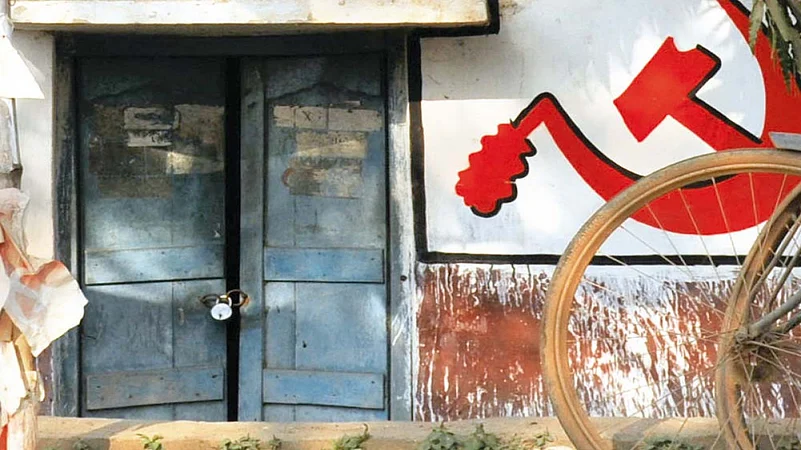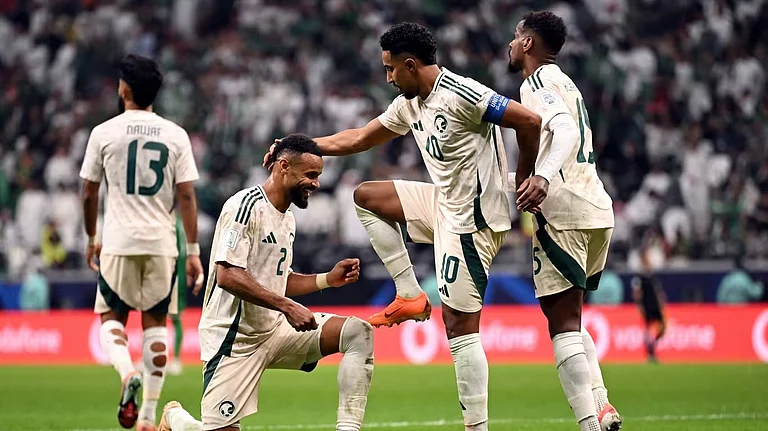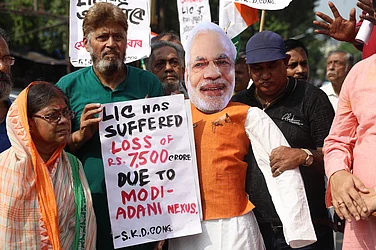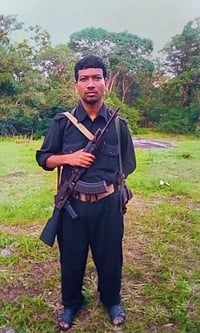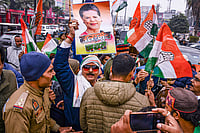For long, a clutch of CPI(M) loyalists, leaders and legislators in West Bengal faced a stark choice: stay on for the sake of the party or soothe a bruised ego and embrace the ghost of an alternative grudgingly. Once the state’s largest political party, it has now no representation from Bengal in either houses of Parliament. There is no assembly constituency that can be called a ‘safe seat’ for the party. The party has been conceding a precipice of defeats and every election looks like skirmishes that are more about putting up the appearance of a fight than producing results. Then the hawks swoop in and the flight takes off.
On October 16, Rafiqul Islam, a CPI(M) MLA, joined the ruling Trinamool Congress (TMC), arguing that Mamata Banerjee’s party was the best bet against the increasing influence of the BJP in the state. His loyalty shift happened after five sitting and former MLAs of the CPI(M) alleged over the past two months that they were approached by the TMC, but they turned down the offer.
Keen-eyed political observers could notice the poaching plot much before, but that remained in the subaltern zone. The CPI(M) led the Left Front that ruled Bengal for 34 years till 2011, but has been reduced to No. 3 in the state’s political equation, and to a marginal political force since 2018. The CPI(M) became the state’s third-largest party in 2011, when its number of assembly seats came down from 176 in 2006 to 40, with the TMC winning 184 and its alliance partner, the Congress, 42. In 2016, too, the CPI(M) got relegated to third spot with 26 MLAs and its partner, the Congress, won 40, while the TMC bagged 211. But its cadre and leaders have gained focus lately. The TMC and BJP have set their eyes on them ahead of the 2021 assembly elections. Instance: Union home minister Amit Shah, at an organisational meeting of the Bengal BJP in Bankura district on November 5, ‘acknowledged’ the role of a section of the CPI(M) behind the party’s 2019 Lok Sabha election success in Bengal and urged the state leadership to get the Leftists to the BJP’s fold formally.
TMC leaders are publicly calling upon Left leaders to join them to fight “the communal and divisive BJP”. For its part, the BJP leaders have issued repeated public invitations to the Left supporters to join them to uproot “the TMC’s autocratic and corrupt regime”. At the grassroots, a number of CPI(M) leaders and workers, such as a former three-time MLA from Bankura district and a former MLA of East Midnapore district, have joined the BJP, identifying it as the strongest opposition to the TMC. Rezaul Karim, a doctor and the CPI(M)’s 2019 Lok Sabha election candidate, joined the TMC in September, calling the party the best option to the fight the BJP.
“A few years ago, I faced pressure from the TMC to join them. I refused and faced harassment as a consequence. Now, the BJP has started contacting me. I can sense the TMC may take another attempt at renewing their offer. I have informed my party,” said a CPI(M) MLA from southwestern Bengal, requesting anonymity.

The TMC’s recent poaching drive is mainly being orchestrated by poll strategist Prashant Kishor’s organisation. The TMC contracted Kishor after the jolt in the 2019 parliamentary elections, when the BJP’s Lok Sabha tally from the state increased from two to 18 and the TMC’s decreased from 34 to 22, while the Left ended with a zero and the Congress was down from four to two. The results showed the Left’s vote share dipped by 22.3 per cent and the BJP’s rose by 23.2 per cent, triggering allegations from the TMC that the Left had transferred votes to the BJP. In response, several CPI(M) leaders, including central committee member Amiya Patra, countered that a section of their supporters voted for the BJP to get protection from the TMC’s “atrocious regime”.
Now, amidst this strong political polarisation between the TMC and BJP, the CPI(M) is finding itself caught in the crossfire. The party maintains the stand that the TMC and BJP are to be fought simultaneously and plans to go to the assembly elections in alliance with the Congress. CPI(M) politburo member M. Salim, a former Bengal minister and Lok Sabha and Rajya Sabha MP, acknowledges that both the TMC and BJP are trying to wheedle away his party’s leaders, but their move reflects their insecurities. “The TMC and Prasant Kishor’s team are approaching our leaders with the money they made from chit fund scams and the BJP is approaching them with what they earned by cheating people. This makes evident their weaknesses. Shows how none of them are confident of winning. They may get a few of our leaders, but our workers and supporters would not follow those leaders to the BJP,” Salim says.
The CPI(M)—a cadre-driven party—saw a flight of supporters soon after it lost power in 2011 and the TMC started poaching Left loyalists. At the initiative of Mukul Roy, at that time known as Mamata Banerjee’s right-hand man, the TMC launched a poaching drive ahead of and after the 2013 panchayat elections, and then targeted MLAs of the Left and the Congress ahead of the Rajya Sabha election early in 2014. In the Lok Sabha elections that year, Left MLAs Dasrath Tirkey and Sunil Kumar Mandal and Congress MLA Saumitra Khan became TMC MPs. Between 2013 and 2019, the TMC poached a series of Left leaders, including expelled CPI(M) heavyweight and former minister and eight-time MLA Abdur Rezzak Mollah, sitting legislators Chhaya Dolui (2014), Nabindra Chandra Bag, Bulu Chik Baraik (2015), Dipali Biswas (2016), Kanai Mandal (2018) and Abdur Rezzak Mandal (2019).
However, it was the Congress that suffered the most—losing more than two dozen MLAs to the TMC in the past nine years. Political observers blamed the TMC’s poaching drive for the rise of the BJP, arguing that the political vacuum created by the move helped the BJP fill the space. The BJP targeted grassroots-level Left leaders since 2014, but started getting success ahead of the 2018 panchayat elections. They made their first major gains in 2019. First, three-time CPI(M) MLA Khagen Murmu became a BJP MP and then CPI(M) MLA Debendranath Roy joined the BJP soon after the Lok Sabha elections. Former CPI(M) MLA Mahfuza Khatun is now a BJP state unit vice president. More than leaders, what BJP has gained from the Left are supporters and organisers at the grassroots. Besides, the BJP convinced disgruntled TMC MLAs and MPs to defect—including Lok Sabha MP Saumitra Khan and nine sitting MLAs since 2019.
Sabyasachi Basu Ray Chaudhury, a professor of political science at Rabindra Bharati University, says the CPI(M) is now the prime target of the TMC and BJP because it is the third-largest political force in the state. “The Congress may have more MLAs and MPs, but is largely a localised organisation centred on Murshidabad district. The Left still has its organisation and support base across the state.” The BJP would have a greater focus on the CPI(M) because of two reasons: first, they are ideological rivals and both regimented parties, and second, the BJP would not like any share of Left votes they got in 2019 to go away in 2021, he points out. The CPI(M) has to show its shrinking loyal base that it is still fighting. That could be key to keeping them energised for what comes next.
By Snigdhendu Bhattacharya in Calcutta






